
Thursday, May 29, 2025 |
I would like to introduce an amazing, powerful “LADY” her name is Jenny. Many of the Women Airforce Service Pilots practiced these 1918 surplus planes as young girls. I was determined to find a Jenny to describe for my “She Flew Bombers” manuscript.
I drove an hour away to the Schellville Airport and with my trusty clipboard and Nikon camera I went to find Frank Shelling’s hanger hoping Jenny would be there. I smelled a whiff of shellac in an open hanger and saw a man touching up the wood parts of an airplane. Breathlessly, before me was a WW ONE 1918 Curtiss Jenny Biplane trainer! With a pounding heart, I introduced myself as an aspiring writer about the WASPs, and owner Frank was very pleased to meet me. He enthusiastically wanted to show off his proud restored “baby” and asked me if I would like to help him move it onto a nearby field so I could take a take a photograph of it. I answered eagerly, yes. But did have some anxiety about moving this large airplane.
Frank instructed me to grab the handhold under the lower wing as he did on the opposite side, and we carefully pulled the airplane out of the hanger. It was astonishingly easy it was to guide the Jenny out onto the field, and it was awesome to see the large wingspan of 43 ft. 7 inches long. I felt the fabric wings. Frank said it was 100% cotton covered with cellulose-based dope to tighten and stiffen them. After the photo was taken, we put the Jenny back in its home. Frank asked if I would like a flight in her. I agreed with astonishment to experience this rare opportunity.
We exchanged phone numbers as I profusely thanked him. On the drive home, thoughts of my frightening flight in the 1941 Stearman flew in my head, and I hoped the Jenny would not be as scary. At home, I pushed my fears aside and with a fervor of enthusiasm, I wrote about my heroine Violet flying in a Curtiss Jenny. 348
Stay tuned for my next blog: Up in a Fabric and Wood Flying Machine.
Monday, May 12, 2025 |
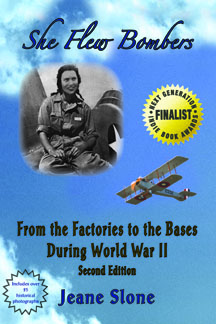 After meeting my first amazing WW II woman Airforce service pilot, Florence Wheeler, it sparked the beginning of my research to write my historical novel, She Flew Bombers.
After meeting my first amazing WW II woman Airforce service pilot, Florence Wheeler, it sparked the beginning of my research to write my historical novel, She Flew Bombers.
I learned that young women in the 1930’s did fly airplanes! Many learned how on fabric and wood surplus 1918 World War One Curtiss Jenny’s.
I was determined to try and find this airplane to see and feel what it looked like to describe more accurately in my book. It would be my first hands on experience, and this method would continue when writing all five of my historical novels.
I went to the Pacific Coast Air Museum in nearby Santa Rosa, CA and asked if anyone knew of where a “Jenny” was in Sonoma County. One of the members told me he thought a pilot had one in a hangar in the town of Sonoma at the Schellville Airport.
I drove there with my camera and clip board and stopped by the Vintage Aircraft Company at the airport. The receptionist told me that Frank Shelling had a restored World War One Curtiss Jenny, but he was not there and to come back on a Thursday.
A lightbulb went off in my head as I read the sign “Biplane Rides” and I paid to go flying in a restored 1941 WW II Boeing PT-17 Stearman open cockpit bi-plane.
This type of aircraft was used by the WASPs for training purposes and practicing aerobatic maneuvers. These maneuvers are used to challenge pilots to control the aircraft in unusual attitudes, improving their handling skills and situational awareness. Aerobatics training also enhances confidence and calm decision-making during challenging flight conditions.
By going up in the 1941 Stearman I could add this skill of experiencing aerobatics firsthand and write an accurate account of what it is like for the WASPs to perform tricks.
I thought about the comic strips in the newspaper and watched the television specials of the Snoopy the dog cartoon character fearlessly flying across the fields into enemy territory chasing the Red Baron across France performing many aerobatics. I was over the top excited to become Snoopy!
After I paid for the flight, I met my pilot, Chris Prevost, who was the owner of the Vintage Aircraft Company. This remarkable man was a passionate vintage aircraft restorer with over 11,500 flying hours. I told the pilot that I was doing research about the WASPs to write a book. He was as excited to meet me as I was to meet him, and Chris said he would perform extra tricks for me to experience!
We walked outside to the bright reddish-orange aircraft as a surge of enthusiasm with anticipation filled my entire being as my heart fluttered.
Pilot Chris placed a simple, thin cloth helmet on my head. This was obviously just a photographic gimmick since it certainly would not protect my head in case of a crash. He also put a parachute on me then his assistant helped me climbed up the ladder into the front cockpit and strapped me in.
The assistant hand-propped the propeller as my excitement also turned with it and the roar of the engine shot up my adrenaline level as my heart pounded. I was ready for this super, fun thrilling adventure!
Chris got in the back cockpit, and we ascended into the sky. It was exhilarating to feel the wind rushing into my face, the fragrance of the exhaust with the freedom of sitting in the open air enjoying the lovely panoramic view streaming below as the patchwork of the colorful fields soared by.
Unfortunately, that wonderful rush was short lived when the plane flew extremely fast, and I was spun sideways and upside down like a crazy rollercoaster ride. The ground became the sky and the sky the ground. The tricks filled me with rapid confusion.
I had constant anxiety that the pilot never instructed me on the use of the parachute I was wearing, plus having an asinine cloth cap as a fake helmet was worrisome. What if something went wrong in this 66 -year- old antique plane and we had to bail out? Further tricks made the G-forces press weight on my body as the vintage plane climbed and rolled.
The 20-minute flight felt like an intense hour as I closed my eyes shut for mental protection. I couldn’t even see or hear the pilot behind me to tell him I wanted to get out to end this nightmare.
Relief!
At last, it was over as pilot Chris Prevost landed the WW II Stearman and helped me out. I climbed down the ladder to the safety of solid ground my legs wobbled and shook.
The pilot with a big grin on his face asked me how I liked all the tricks he performed. Not wanting to disappoint him I mumbled, “It was OK.”
Upon sitting down inside the hanger, I gained control of myself, retrieved my clipboard and asked him what the name of all the tricks were called that we did. Chris proudly rattled off the list of aerobatics:
S turns, lazy eights, barrel rolls, loops, hammer heads and Cuban eights.
I wrote them all down thanked the owner and drove to the safety of my home.
While driving I thought I certainly was glad to have had that unforgettable adventure but would never try it again! On the hour ride home, I formulated what I would write in my budding manuscript “She Flew Bombers.”
I would name the heroine Violet, after my daughter. Besides “Violet the pilot” sounded catchy! Violet could go up in a plane with a handsome barnstormer pilot and share the same fear I had doing aerobatics. I would base Violet loosely on WASP Florence Wheeler’s flying experiences.
The next day as I typed my budding manuscript on my laptop, I discovered that writing in the first-person feels more sincere and authentic, and I could openly share this feeling with personal hands-on experiences. This would make the story more relatable and emotionally compelling for my readers.
Stay tuned for Blog three: Flying in a World War One fabric and wood Curtiss Jenny.
Photos of my adventure:
-

-
Vintage Aircraft Company
-

-
Chris Provost: Owner & Restorer of Vintage Aircraft
-

-
Chris Provost
-

-
Climbing aboard the WWII Stearman
-

-
Strapped In!
-

-
Climbing into the front cockpit with my helmet and parachute on!
-

-
Heading to the runway
-

-

-
Ready, Set, Go!
-

-
Up in the air!
-

-
The Patchwork Landscape
Saturday, May 3, 2025 |
Writing my first historical novel (She Flew Bombers) was purely a serendipitous experience, full of surprise adventures as I began my journey discovering unknown amazing powerful women.
I had been working full time as the owner and director of a large childcare center, and to make life easier my brother gave me a brand-new Mac laptop. I was thrilled at how it could copy and paste, and correct errors by simply pressing delete and not having to use the difficult “correcto-type” tape used with an electric typewriter. I used my new laptop for my business but soon felt compelled to use it to write a book.
I decided to go through my mother’s large scrapbook packed with information and memorabilia about her career in the Women’s Army Corp, (WACs) during WWII. Surely this would make an exciting novel since I had never met anyone else who had a mother in the army.
But I was disappointed to learn that she was never sent overseas for adventures, she remained stationed at the Columbia Army Air Base in Columbia, South Carolina working as a stenographer/ secretary, even though she had attained the rank of Colonel. Of course this was a necessary wartime job, but certainly not very exciting to write about!
I remember her telling me she joined the Army, at 25 years old on May 17, 1943, because she was tired of waiting for her husband to come home from the war, and since she did not yet have children, she wanted to do her patriotic duty for the war effort just like her husband was doing.
FACT: There were 300,000 women who served in uniform. by April 1945, there were 99,000 WACS.
My dad, when he was 26 years old, had left his career as a New York Forest Ranger and enlisted in the army on January 21, 1940. Discharged in 1945 with the rank of 1st Lieutenant.
My parents got married on Feb. 21, 1941 when my dad received a three-day pass from his Army Post in Virginia.
My mother was honorably discharged from military service in Oct. 16, 1944 from the Columbia Army Air Base, Columbia, South Carolina due to pregnancy with her first child.
FACT: WACs were first permitted to remain in the Army while pregnant if they were married and requested to do so on April 9, 1971. Prior to this, a pregnant WAC would typically have had to leave the service. This change was a significant step towards greater equality for women in the military.
Fortunately, as I searched through all of the weekly newsletters that my mother saved during her enlistment in the Women’s Army Corps (WAC), I found a small 3-inch article titled, “WACs find WASPs in barracks.” WASPs was an anachronism for Women Airforce Service Pilots.
This tiny “WACS FIND WASPS IN BARRACKS” article sparked my research about the Women Airforce Service Pilots.
I was totally intrigued to learn there were women pilots during WW II and discovered that many people had never heard of the WASPs.
I determined that this would be an original subject, as well as fascinating to research and write about.
In 2006, my mother was showing signs of Alzheimer’s and was living alone in the next town. I asked her about the women pilots, but she couldn’t really comprehend what I was talking about.
One day she called me up and said, “There’s a FREE dinner for veterans on veteran’s day.” Super busy full-time me responded, “That’s nice mom.” She then repeated her favorite phrase, “IT’S FREE!” I answered, “You should go to it mom”. Mom raised her voice and yelled into the phone, “You know I can’t drive at night!” I rarely went out at night due to running my daycare center and caring for my own large family. I reluctantly gave in and took her to the Veteran’s dinner nearby, she was the only woman veteran at the dinner.
We sat at the large, long table where about 30 veterans were gathered. Making the best of a dull event, I asked several vets if anyone had heard of the women pilots.
One young Vietnam war vet said to me, “I think my home economics teacher was a WASP, she taught at the local high school here in Healdsburg.”
My eyes lit up as he told me that he thought she still lived here in town. I quickly wrote her name down.
The following day I looked up the name “Florence Wheeler” in the phone book, (remember those big fat books that were delivered every year to homes?) and it turned out she lived right around the corner from my mother’s house.
MEETING MY FIRST POWERFUL AND AMAZING WOMAN:
I felt a shiver go through me as I discovered that a WASP was living right near me; one of the only 1,074 women that had served in this role during WW II.
I called her up and she invited me over and told me all about the Women Airforce Service Pilots.
Florence was a sharp 83-year-old woman and was not only in the WASPs but was also flight instructor that taught WASPs how to fly a few of the 77 different types of aircraft used during the war.
At last, I could begin my research about women pilots!
Next time:
Stay tuned for my interview of the owner of one of the first airplanes most of the WASPs learned to fly in: the surplus World War ONE Curtiss Jenny’s (Curtiss JN-4D Jenny.)
Images:
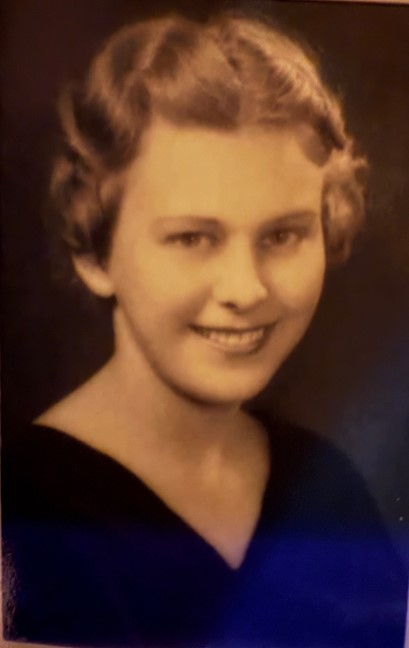
Adele, age 25
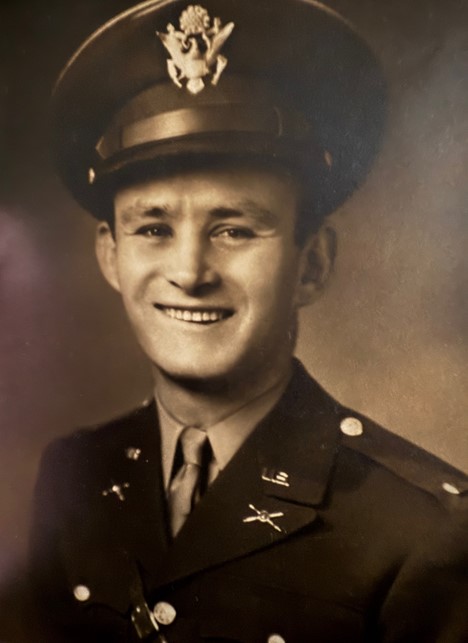
My Dad, William Slone, Age 26
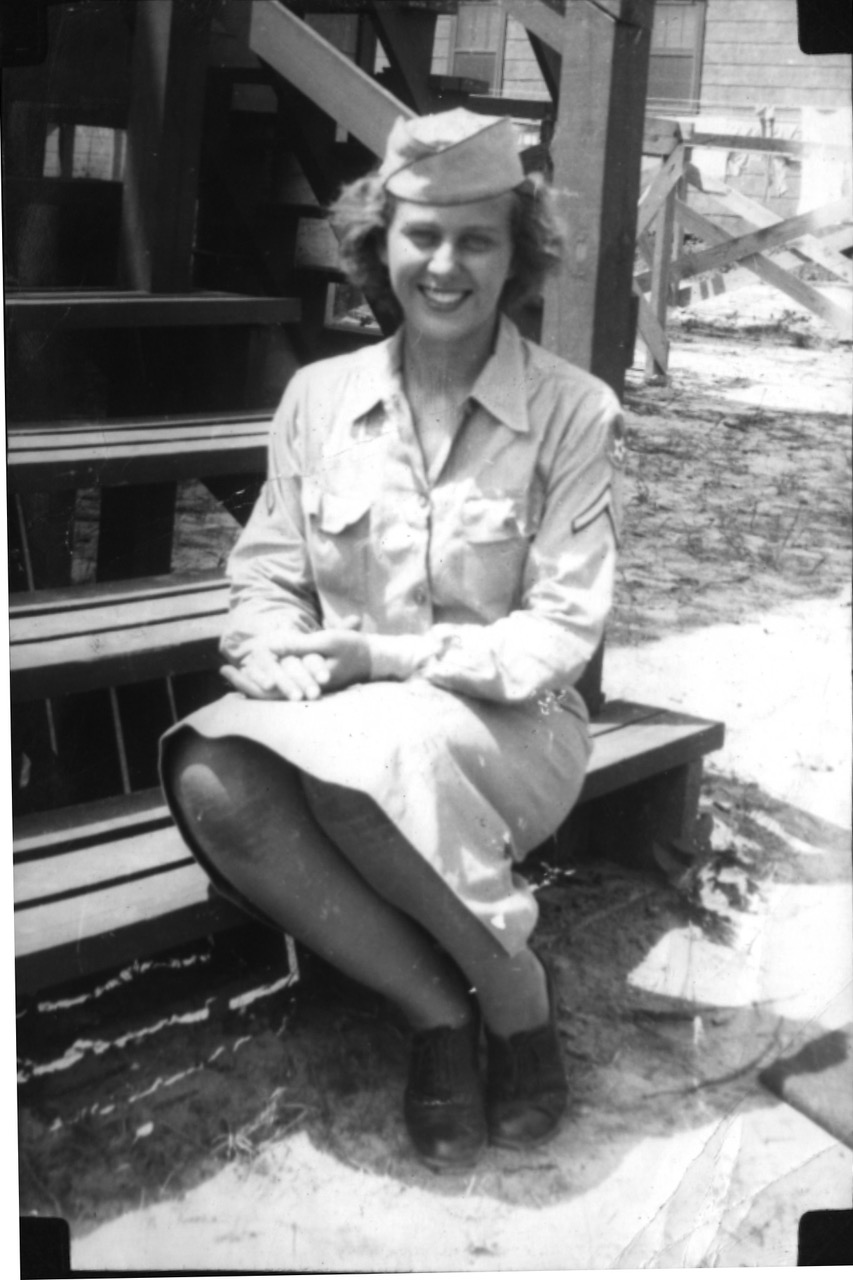
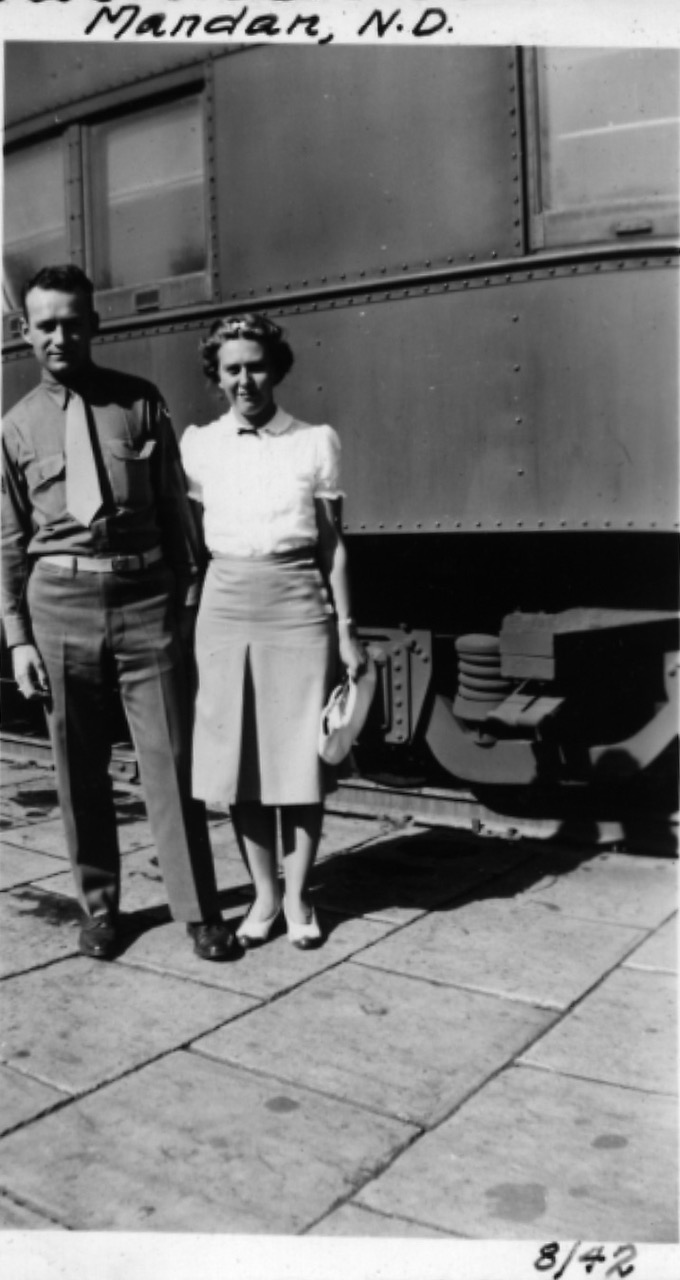
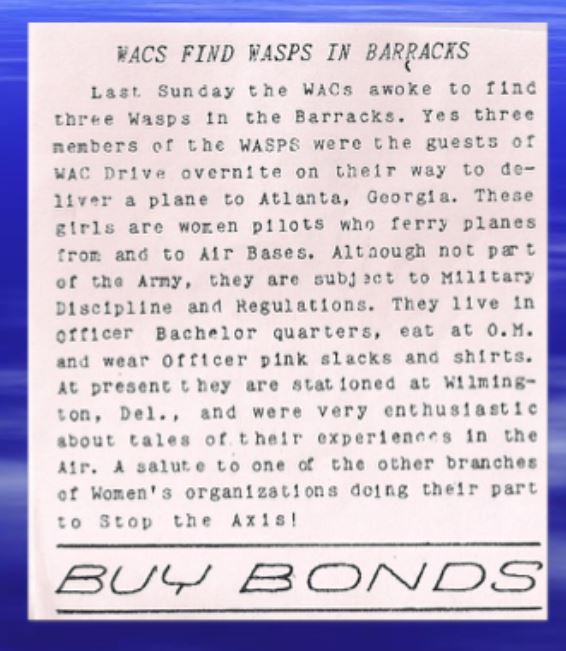
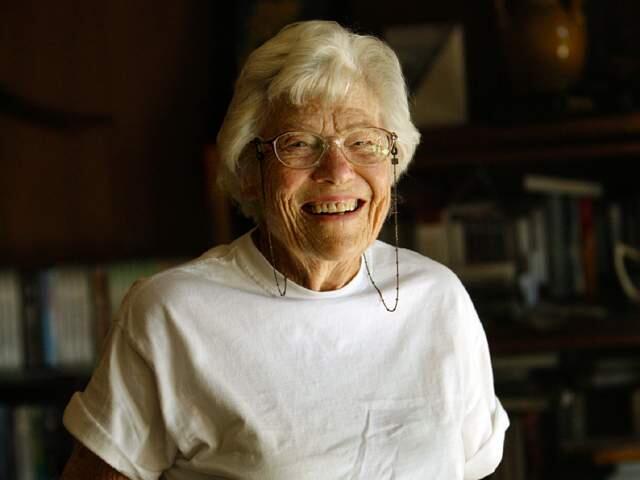
Florence Wheeler, Age 87



















